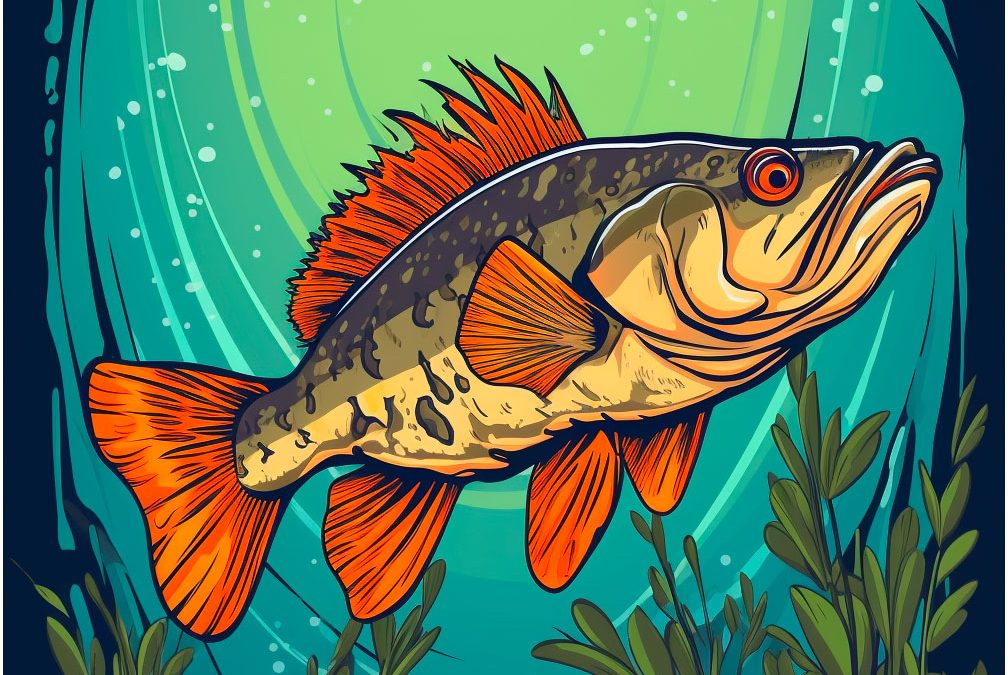Winter can be a tough time for bass fishermen. The cold weather and water temperatures can make the fish sluggish and less active, leading to fewer bites and more frustration. However, understanding how bass behave in winter can help anglers target them more effectively and increase their chances of success. One key aspect of bass behavior in winter is their depth. In this article, we’ll explore how deep bass go in the winter and why, as well as techniques for catching them.
Why Bass Go Deep in Winter
Bass are cold-blooded, which means that their body temperature is regulated by the water around them. As the water temperature drops in winter, so does their metabolism. This can make them lethargic and less likely to move around or feed as frequently. To conserve energy, bass will often seek out deeper water where the temperature is more stable and warmer than at the surface.
In addition to temperature changes, bass will also go deep in winter to find food. Many of their preferred prey species, such as crawfish and baitfish, will also move to deeper water as cold weather sets in. By following their food sources, bass can maximize their energy intake and avoid expending too much effort in search of food.
Water clarity is another factor that can influence bass depth in winter. Clear water allows more sunlight to penetrate the surface, which can warm the water and attract prey species. Bass will often follow their food sources into clearer water, regardless of depth.
How Deep Do Bass Go in Winter?
The depth at which bass will be found in winter can vary depending on several factors, including water temperature, clarity, and time of day. In general, however, bass will be found at deeper depths in winter compared to other times of the year.
Shallow Water
During winter, bass may be found in shallow water early in the morning or late in the day when the water is at its warmest. They may also be found in shallow water near structures such as bridge pilings, docks, or trees that provide cover and attract prey. However, during prolonged periods of cold weather, bass are unlikely to be found in shallow water for very long.
Mid-Depths
Mid-depths of around 10-20 feet are where bass are most often found in winter. This range provides a balance between the warmer temperatures of the shallows and the colder depths. Bass can use mid-depths to find food and shelter, as well as to conserve energy.
Deep Water
In very cold weather, bass may be found at depths of 30 feet or more. These deep water areas provide stable temperatures and access to food sources that have also moved to deeper water. While bass may not be as active as in shallow or mid-depths, they can still be caught with the right techniques.
Techniques for Catching Winter Bass
Now that we’ve covered why bass go deep in winter and where they can be found, let’s look at some techniques for catching them.
Fishing Deep Water
When fishing deep water in search of winter bass, electronics are your best friend. Use a fish finder to locate drop-offs, ledges, and other structure that is likely to hold fish. Pay attention to areas where the bottom changes depth or moves from soft to hard. Once you’ve found a likely spot, use slow-moving baits such as jigs, drop shots, or Texas-rigged worms. Fish these baits slowly along the bottom, pausing occasionally to let them settle and entice any nearby bass.
Another effective technique for targeting deep water bass in winter is to use a vertical presentation. This can be achieved using a drop shot rig, or by fishing a jig or other bait directly beneath the boat. When using this technique, pay close attention to your fish finder and adjust your presentation based on the depth and location of any fish you mark.
Fishing Mid-Depths
For bass in mid-depths during winter, jerkbaits are a popular choice. These lures can be fished at different depths and speeds to mimic the movement of baitfish. Experiment with different colors and sizes to find what works best for the conditions. You can also try fishing near drop-offs, ledges, and other structure that is likely to hold fish.
Bass in mid-depths may also be found near large schools of baitfish. Look for birds or other signs of feeding activity on the surface, and cast lures such as jerkbaits or swimbaits into the area. Retrieve these lures at different speeds and depths until you find the right presentation to trigger a bite.
Fishing Shallow Water
When targeting bass in shallow water in winter, finesse tactics are the way to go. Use a lightweight rod and reel with light line, and fish with small finesse baits such as small jigs, ned rigs, or Carolina rigs. These baits will mimic the movement of crawfish or other small prey species that bass may be feeding on in the shallows.
When fishing in shallow water, it’s important to be stealthy and avoid spooking the fish. Use a slow, quiet approach when approaching likely areas, and make small movements and casts to avoid disturbing the water too much. Fishing near cover such as downed trees or weed beds can also attract bass to the shallows.
Conclusion
Understanding how deep bass go in winter and why they behave this way is key to successfully targeting them during the colder months. Whether you’re fishing deep water, mid-depths, or shallow water, adjusting your techniques based on the time of year and water conditions can make all the difference. With a little patience and persistence, anglers can catch plenty of bass during the winter season.

